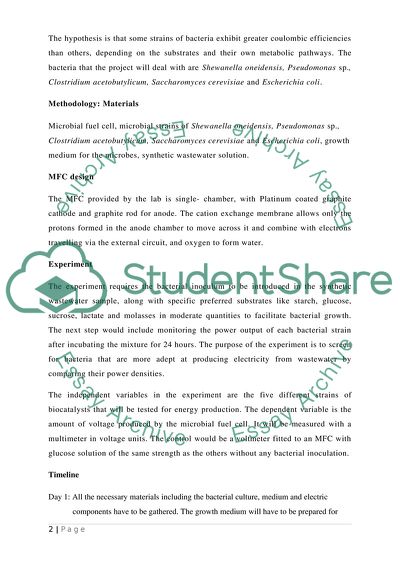Cite this document
(Production of Electricity using Microbial Fuel Cells Research Proposal Example | Topics and Well Written Essays - 1250 words, n.d.)
Production of Electricity using Microbial Fuel Cells Research Proposal Example | Topics and Well Written Essays - 1250 words. https://studentshare.org/biology/1796960-microbial-fuel-cells-design-study
Production of Electricity using Microbial Fuel Cells Research Proposal Example | Topics and Well Written Essays - 1250 words. https://studentshare.org/biology/1796960-microbial-fuel-cells-design-study
(Production of Electricity Using Microbial Fuel Cells Research Proposal Example | Topics and Well Written Essays - 1250 Words)
Production of Electricity Using Microbial Fuel Cells Research Proposal Example | Topics and Well Written Essays - 1250 Words. https://studentshare.org/biology/1796960-microbial-fuel-cells-design-study.
Production of Electricity Using Microbial Fuel Cells Research Proposal Example | Topics and Well Written Essays - 1250 Words. https://studentshare.org/biology/1796960-microbial-fuel-cells-design-study.
“Production of Electricity Using Microbial Fuel Cells Research Proposal Example | Topics and Well Written Essays - 1250 Words”. https://studentshare.org/biology/1796960-microbial-fuel-cells-design-study.


